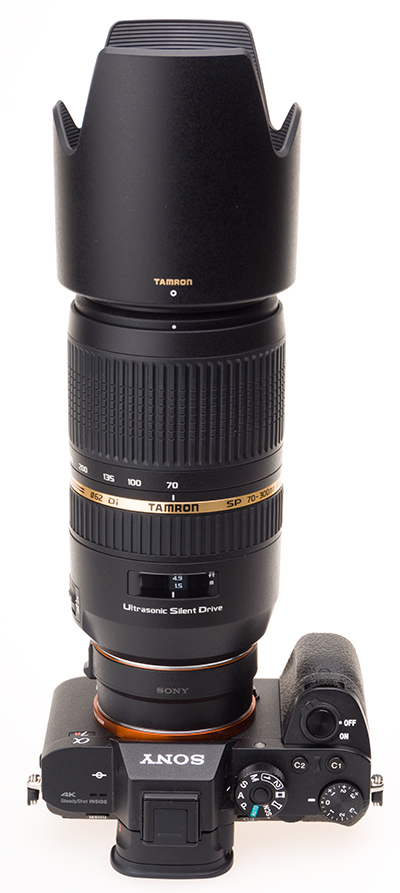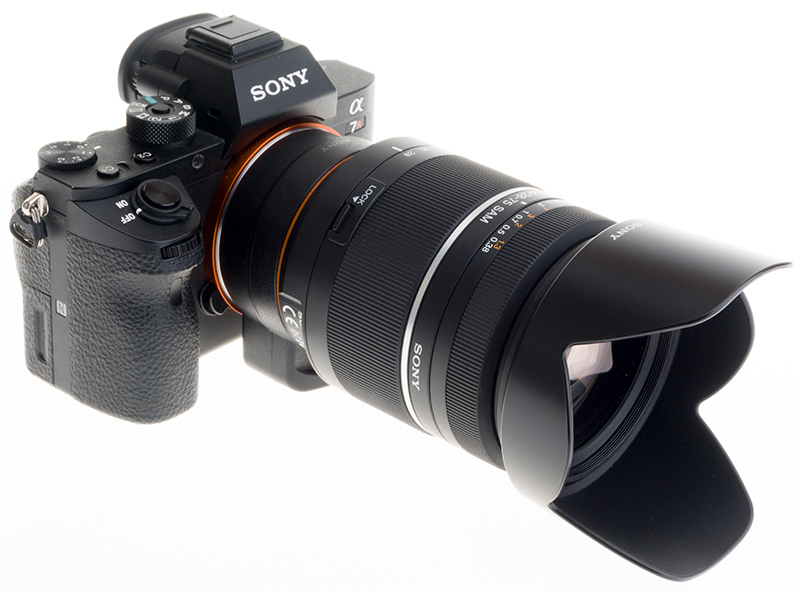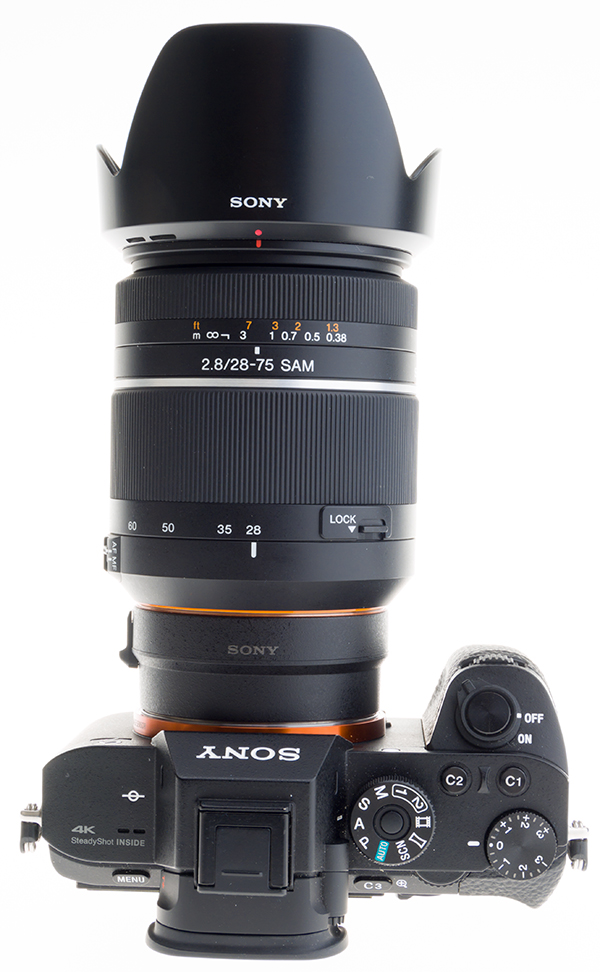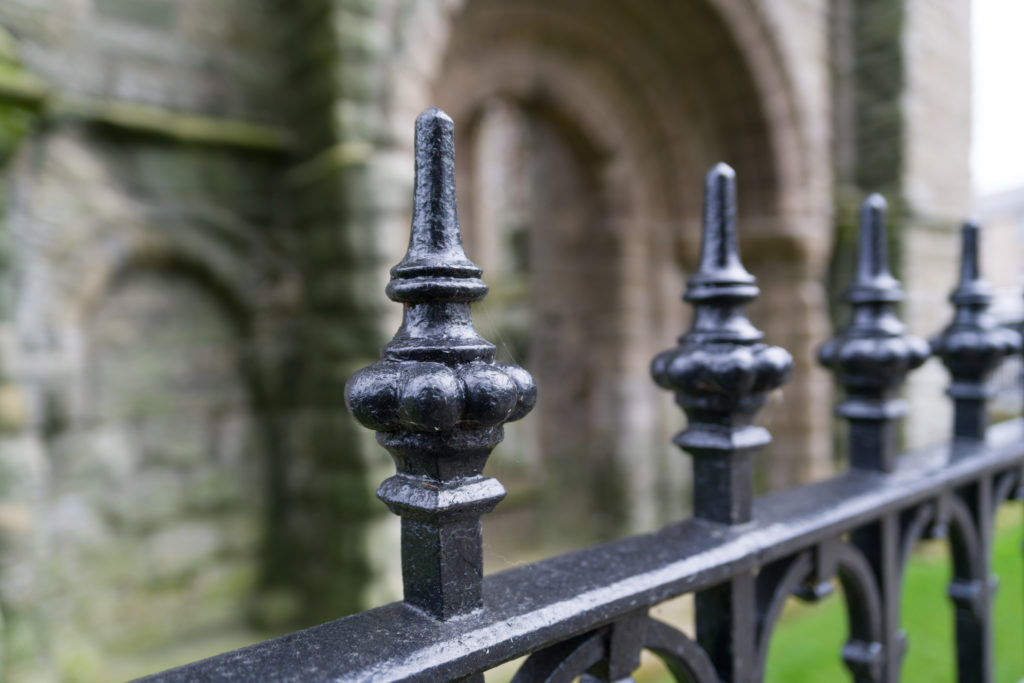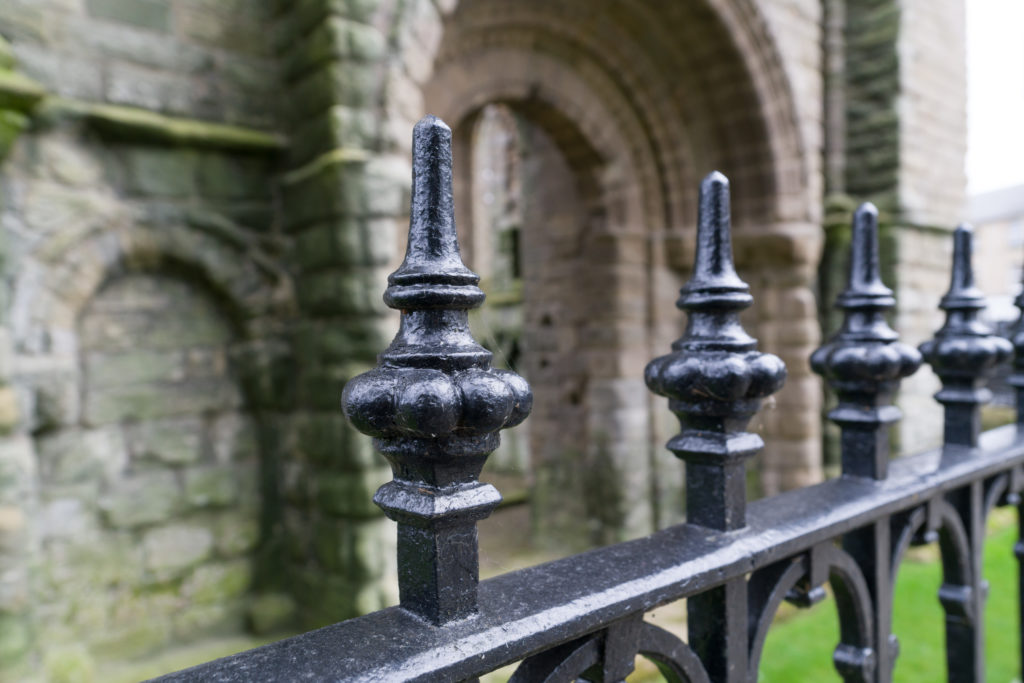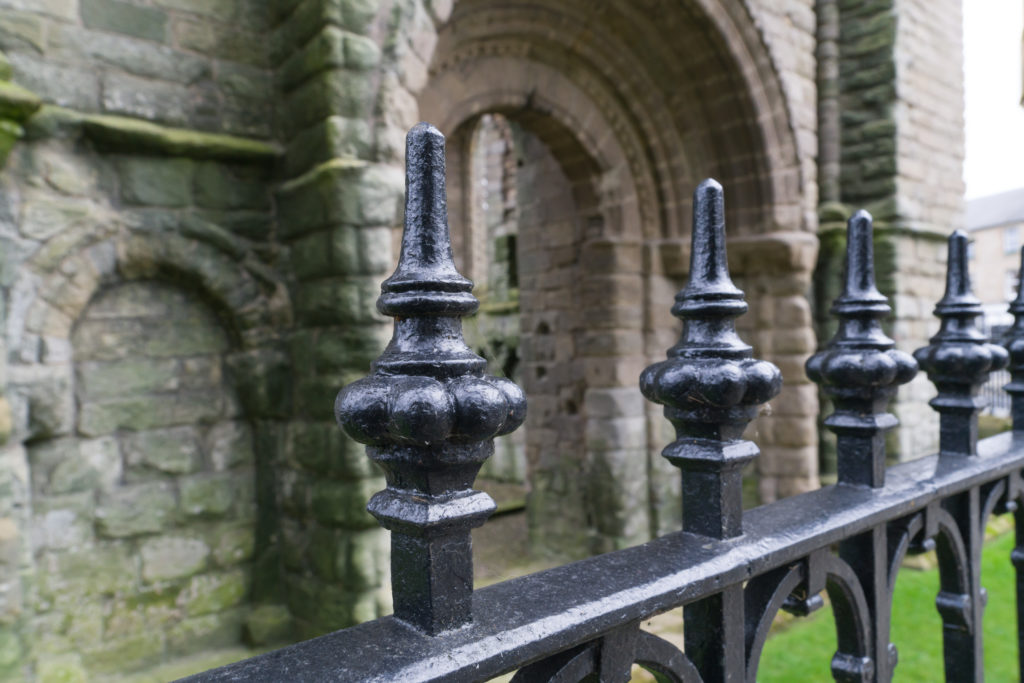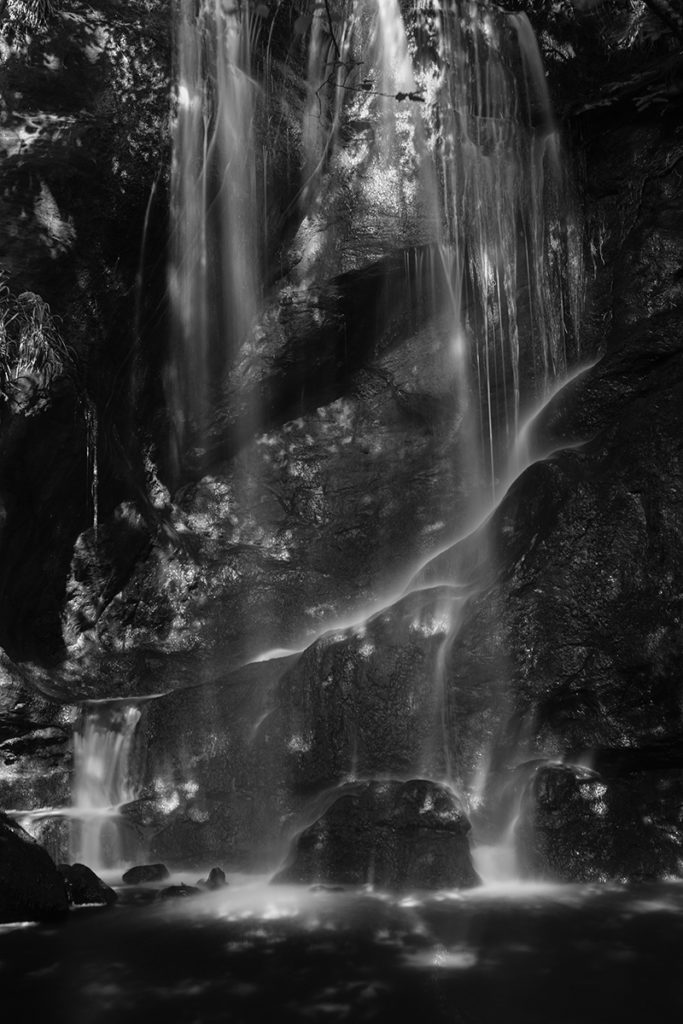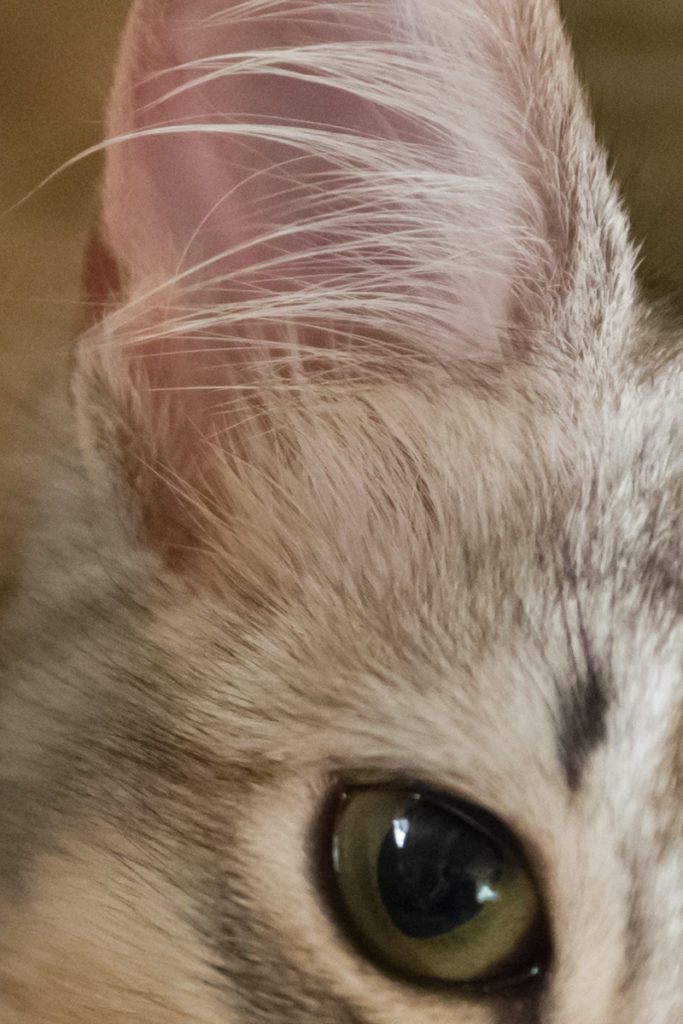Tamron’s super value 70-300mm USD on the A7RII
If you want to get a 70-300mm which works on the Sony A7RII, the A7 series body with the best on-sensor phase detection/contrast detection mix, your first choice should be the new Sony FE 70-300mm f/4-5.6 G OSS. But that demands a wallet opened with £1,150 (UK SRP) in it. In return you get a rare specification mix including focusing down to under one metre and almost a one-third life size image scale, without needing any special macro range.
For those who own either an LA-EA3 or LA-EA4 Sony adaptor, there’s a choice of A-mount lenses. The older Sony 70-300mm f/4-5.6 SSM G will work OK, but the current SSM II version is tuned for the on-sensor focusing system. Both work on the LA-EA3 with its SLT-mirror free design, and focus to a decent 1.2m. The low-cost Sony body-drive AF f/4.5-5.6 75-300mm will only AF on the LA-EA4 and is probably best ruled out.
The same goes for Tamron’s body-drive focus Di Macro, about the lowest cost such lens you can buy, and Sigma’s standard and non-APO Macro designs. For the LA-EA4 only, the Sigma 70-300mm f/4-5.6 APO Macro DG is actually worth buying as a good example can usually out-resolve any other lens of this range, but it’s slow and clunky. It focuses to under 1m and half life size scale but like the Tamron Di Macro does this using a separate close-up range you have to switch in to, only usable between 200mm and 300mm zoom setting.
This leaves two 70-300mm independent lenses with in-lens focus motors. The Sigma 70-300mm f/4-5.6 OS DG is again very good optically (a fair match for the Sony G original) but it doesn’t use an HSM focus motor. Instead it has a motor more like a Sony SAM drive. As a result, it will only focus quickly on the LA-EA4. It can’t handle on-sensor PDAF.
The Tamron SP 70-300mm f/4-5.6 Di USD can. It has an Ultrasonic Silent Drive, and this is very close in design to the Sony G SSM. Because the lens dates from 2009, most test reports have been based on DSLRs and not many Sony A7 system owners have bothered to consider it. At the current price in the UK – even the official SRP is only £275 but normally discount to a pre-VAT price of under £200, or if you like, $280 – it’s an unprecedented bargain for an advanced lens using low and extra-low dispersion elements.
You should not be surprised at its size, because it’s almost identical to the Sony G. Same weight (within 5g), same 62mm filter thread, same rear internal focus with plastic window for the scale, same forward zoom ring and single barrel extension. It has one more element, being a 17/12 design rather than 16/11 like the Sony, and it lacks the control buttons and focus range limiter controls. It’s also a quarter to a third of the price.
For me its major shortcoming is the 1.5m close focus, just too far away (nearly fell down stairs trying to get far enough away to focus when testing it, I’m just not used to lenses which force you back this way).
What counts I guess is the optical performance, and here the Tamron still does not let you down despite being a seven-year-old design. Like the Sigma OS, it is a step above any of the previous 70-300mms including Nikon’s VR and the Canon IS design and when I tested it back in 2009 it matched the Sony G SSM even wide open at 300m. What it did not do was focus accurately on my DSLR bodies, needing AF calibration adjustment on the A900 and missing the mark on the A700 and A580. It was fine on the A55.
The lens coating is pretty effective and the lens front rim, like Sony’s G, has no lettering to reflect off filters. It also has an effectively black-out inner baffle and zoom mechanism. Combined with the super-deep lens hood (very much like the monster you get with the Sony G) the result is a flare-free optic you can use in almost any light.
The rear mount is a high quality metal A-mount as expected, and on my LA-EA3 the whole assembly was firm and felt unstressed.
Tamron kindly sent me a lens to update my earlier testing when this design was new. I wanted to see one thing – did the USD drive allow PDAF on the A7RII with the LA-EA3? If it did, this bargain price but advanced lens would be a possible 300mm range solution (and also, though I can’t test this, on the A7II and A7SII – I’m pretty sure it will not play well with pure contrast detection on the A7R, as on my A7 it will focus at all focal lengths and in low light but can take several seconds of hunting and fine tuning in small steps).
Fitted to the A7RII+LA-EA3 I found it snaps into focus really fast, able to use either wide area or centre AF with much the same speed as native E-mount lenses, and activating the ‘green square’ focus point display. It was very poor using moveable Spot AF (unusable in low light), and the Zone AF option is greyed out. So, it can’t access all areas, but for regular shooting it’s good.
At focal lengths over 150mm, it can be spooked by starting completely out of focus. However, once the lens is not extremely defocused it acquires and tracks rapidly. The full time manual focus over-ride can help set it up before you use AF. In very low light with low contrast targets, at 200-300mm, even prefocusing manually may not prevent a long searching process or AF failure. However, in normal daylight with regular 3D subject matter it’s useable.
Since owners report that even Sony’s own lenses encounter similar issues – the 90mm f/2.8 G OSS Macro is known for hunting and taking time to lock on – it’s an issue more to do with the way the on-sensor focus works than anything else. It’s also much better than, for example, the Canon 70-300mm f/4-5.6 L used on the Sigma MC-11 or Commlite adaptors. That just gives up towards 300mm.
The Tamron has variable bokeh qualities. Foreground bokeh can be untidy and contours just beyond the plane of focus can be harsh. Totally defocused detail in both foreground and background can look very smooth. It has a nine-blade circular aperture, just like the Sony G A-mount, and I’d say overall image look was uncannily similar. The exact look depends on the focal length, working distance, aperture and placing of the foreground and background detail.
Purple rhody at f/6.3 and 300mm – not too bad overall!
Matching person in the distance – again, not bad, with a pleasant three-dimensional look. Maybe I should do a version in black and white…
As for this lens not having VC (Tamron’s OS/OSS) I can only say it doesn’t need it when Sony’s 5-axis sensor stabilisation does so well. Here you can see 1/30s wide open at 300mm indoors at ISO 3200. Note also what CA or fringe occurs. It’s pretty good.
As for handling 42 megapixels, which didn’t exist when the Tamron was designed, there doesn’t seem to be a serious problem. Here’s a quick shot of Scotland’s relationship with the USA and Europe…
And here, frozen by 1/500s shutter speed at the realistic aperture of f/7.1 and ISO of 200, is a detail at 100% size. I’m generally happy with a 70-300mm lens if you can see the weave and the stitching on our town hall flags at 300m, 2/3rds of a stop down from full aperture, reproduced on a 1.5m wide print.
I’ll test the lens further and add a gallery of images and any other comments, but I think that this is the only non-Sony lens of this range which really works well with the LA-EA3 (and of course, extremely well too with the LA-EA4 given AF calibration).
The only slight incompatibility is that the camera/adaptor gives the lens the identity of the Sony 70-300mm f/4-5.6 G SSM, this is what appears in the EXIF. This also means that the camera will invoke an auto profile for the Sony lens, and handle the focusing as if this was the Sony lens. It also loads the built-in profile for the SSM G lens in Lightroom/Adobe Camera Raw. This seems to work just fine. Without the profile enabled, the flag shot for example shows a stop or more of vignetting which is a relative weakness of the design – exactly as it is with the Sony. The new FE G lens with its 72mm front element as opposed to the 62mm of the Sony G, Sigma OS and Tamron SP designs can be expected to have much less full aperture vignetting.
Please note that this report refers specifically to the A7RII as a host body – as stated, it’s not useful on the A7 and I also found it’s not good enough to use on the A6000 with LA-EA3 (fine with LA-EA2 or LA-EA4). It will eventually focus but with too much hunting and missing.
– David Kilpatrick
If you’d like to check availability or order the lens, here are my affiliate links (may help pay for the site, don’t cost you anything):


